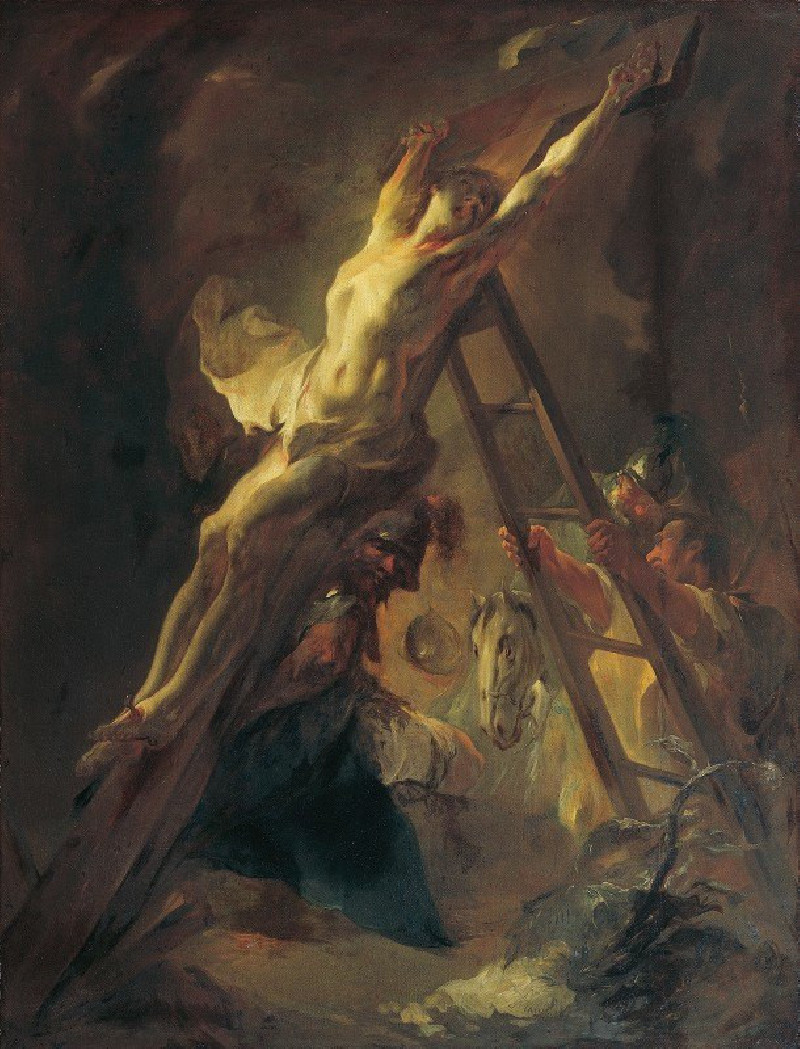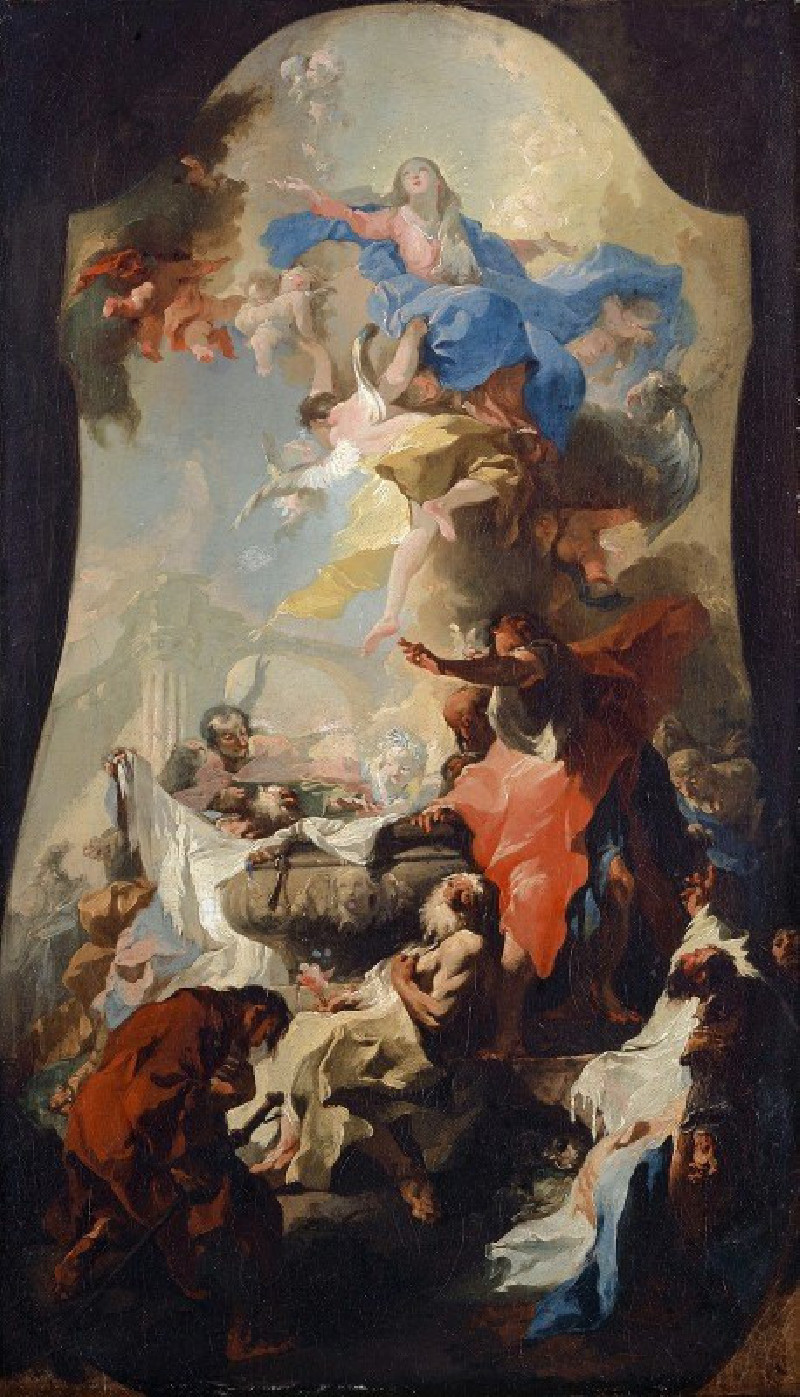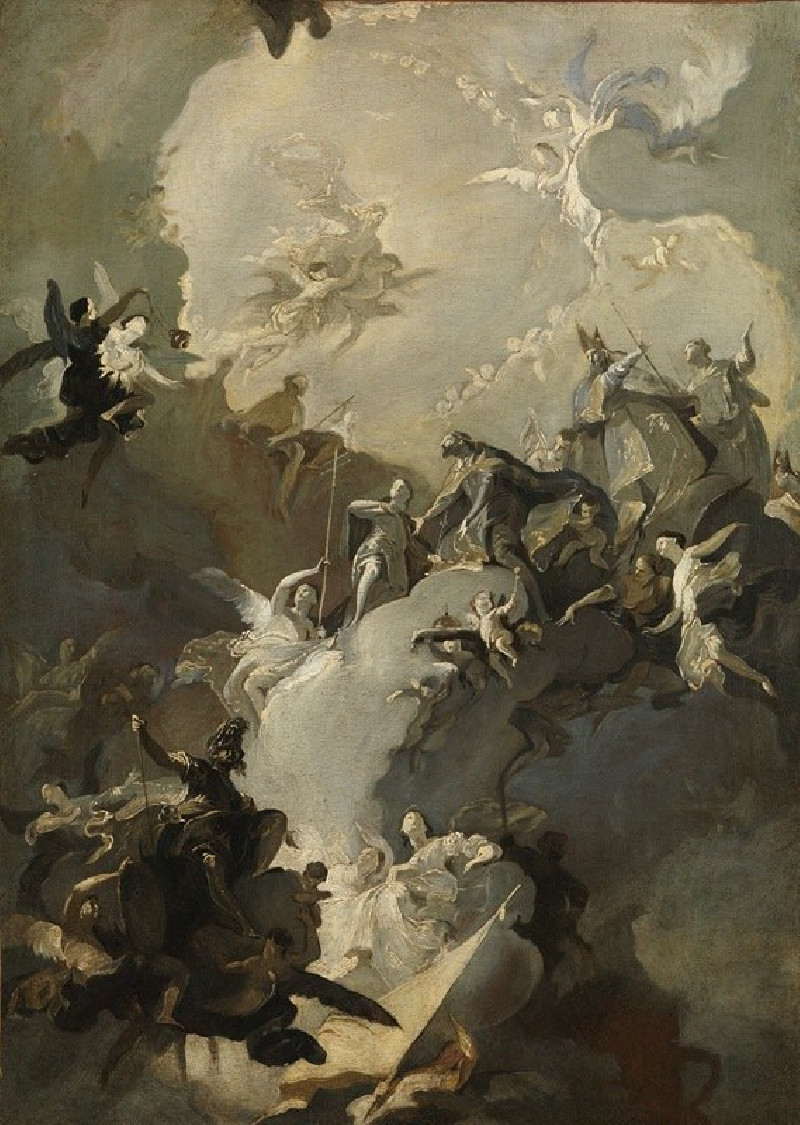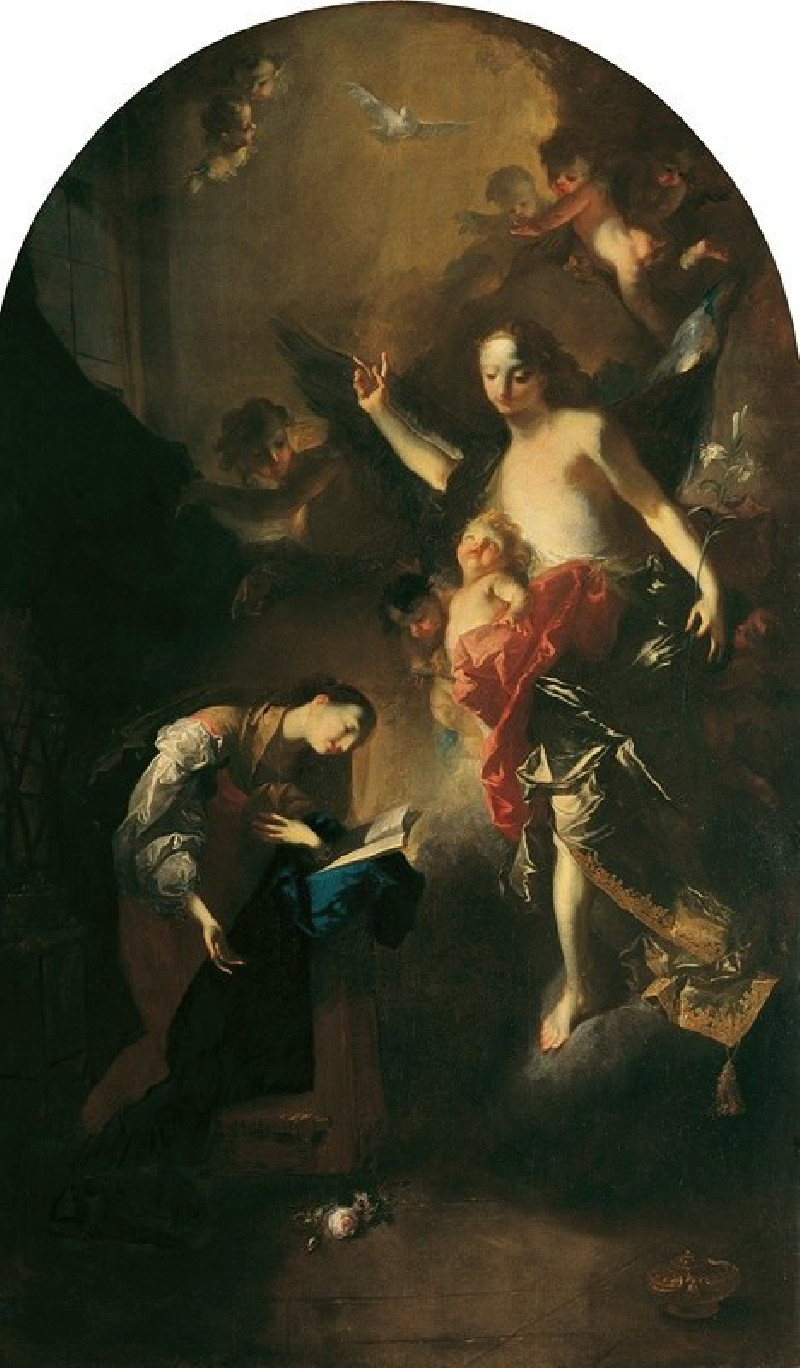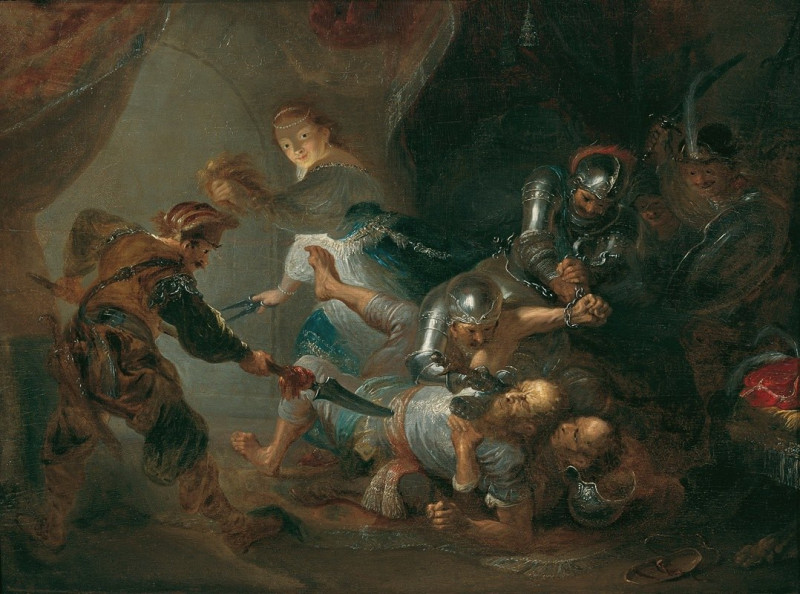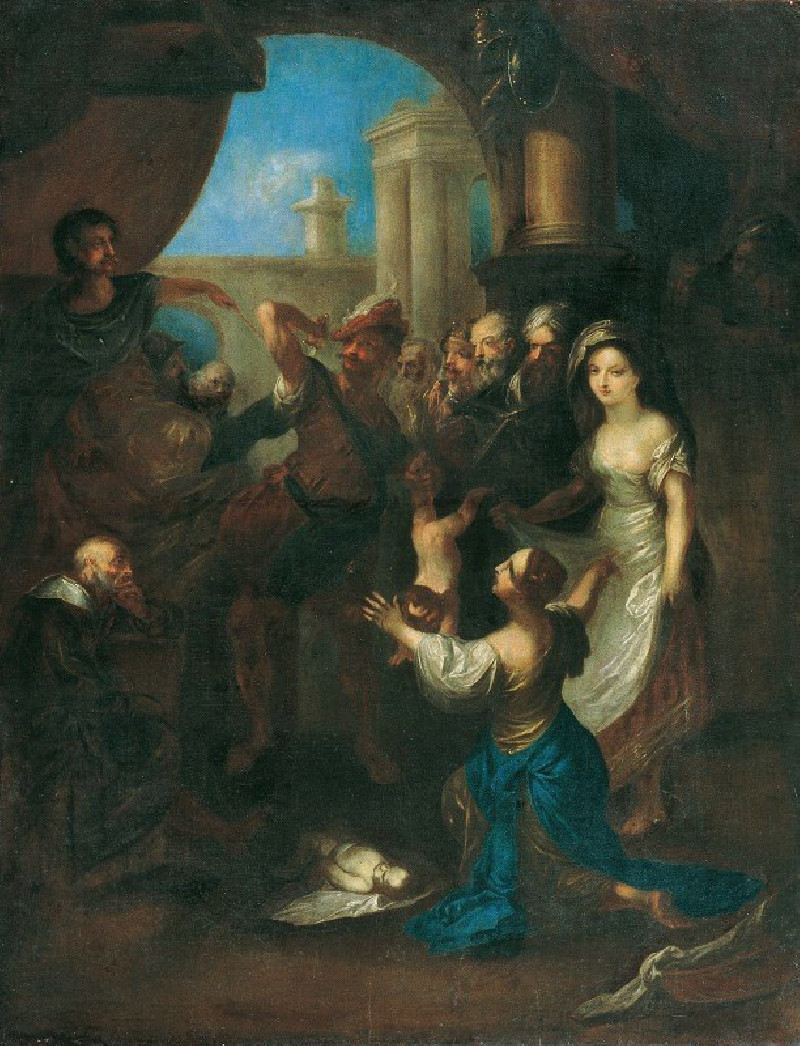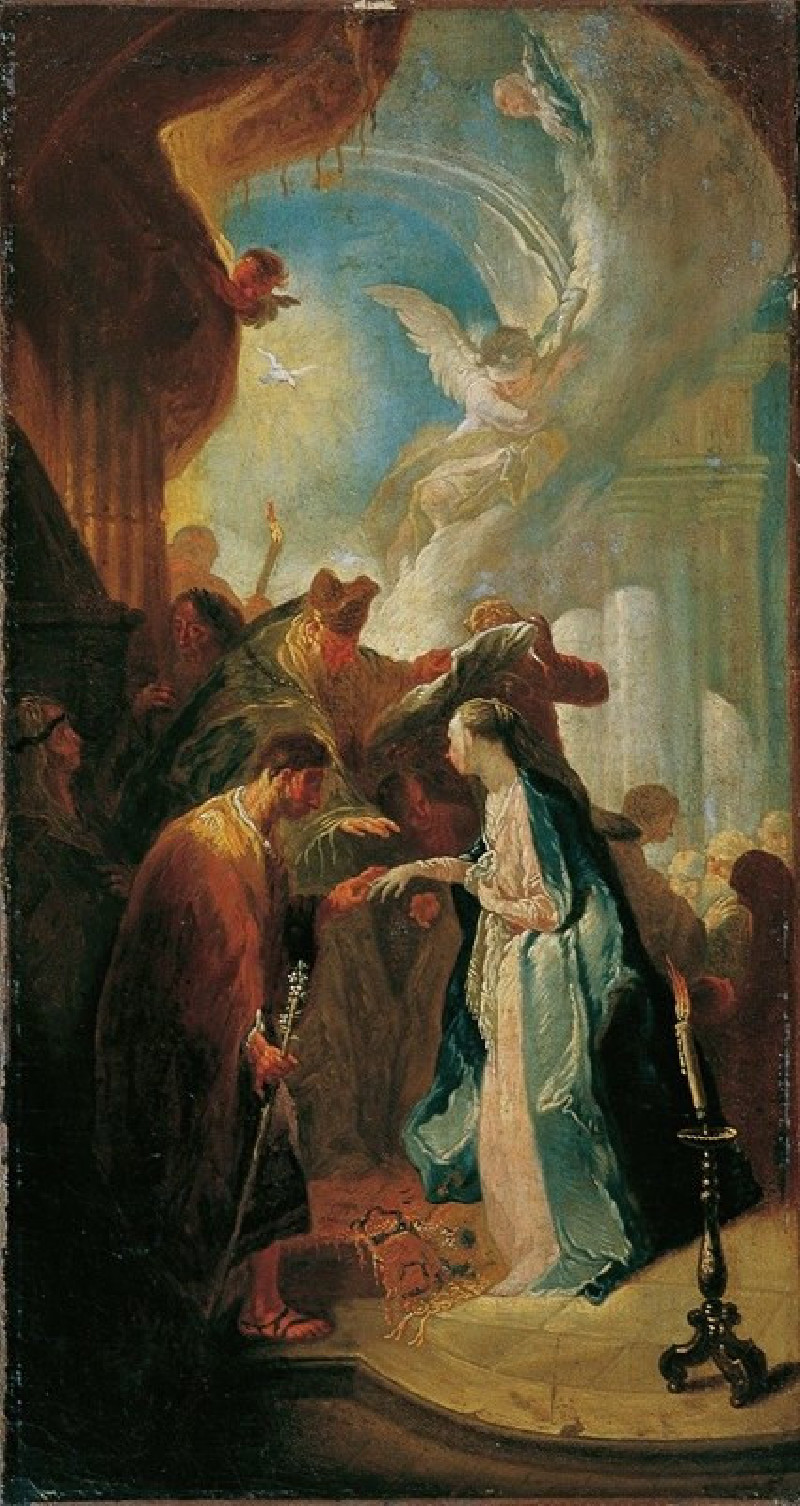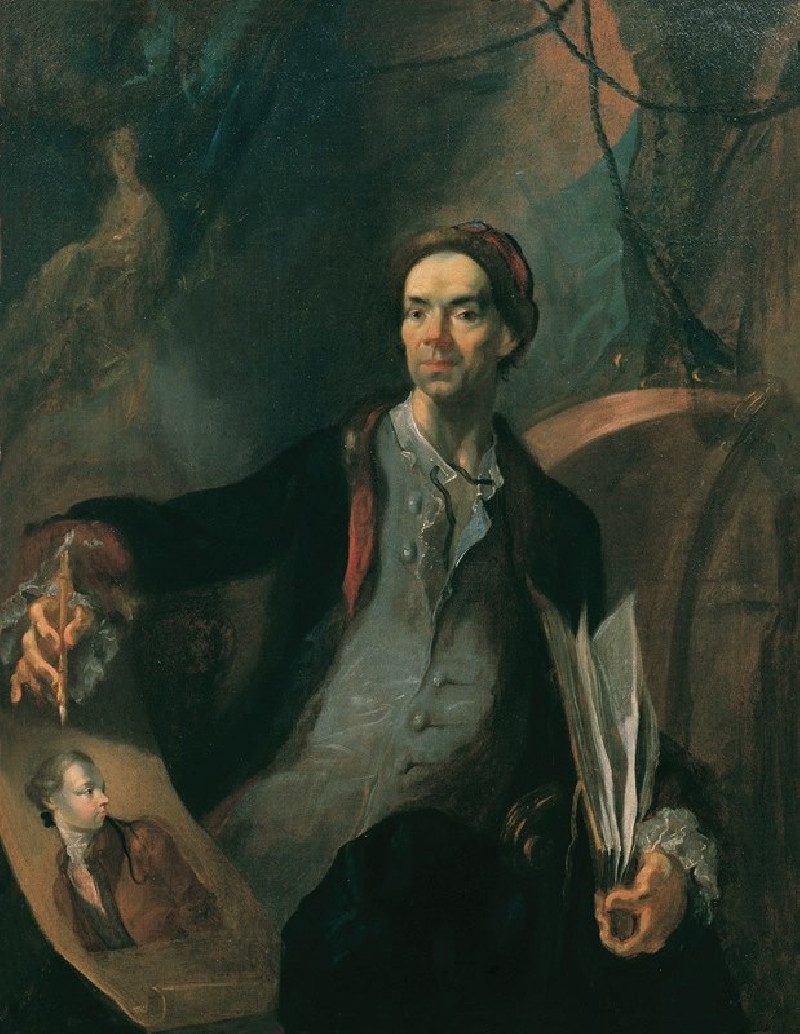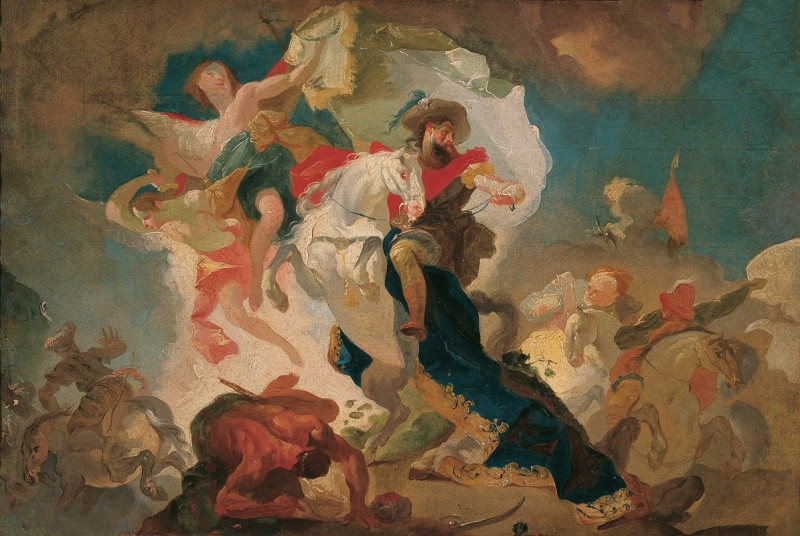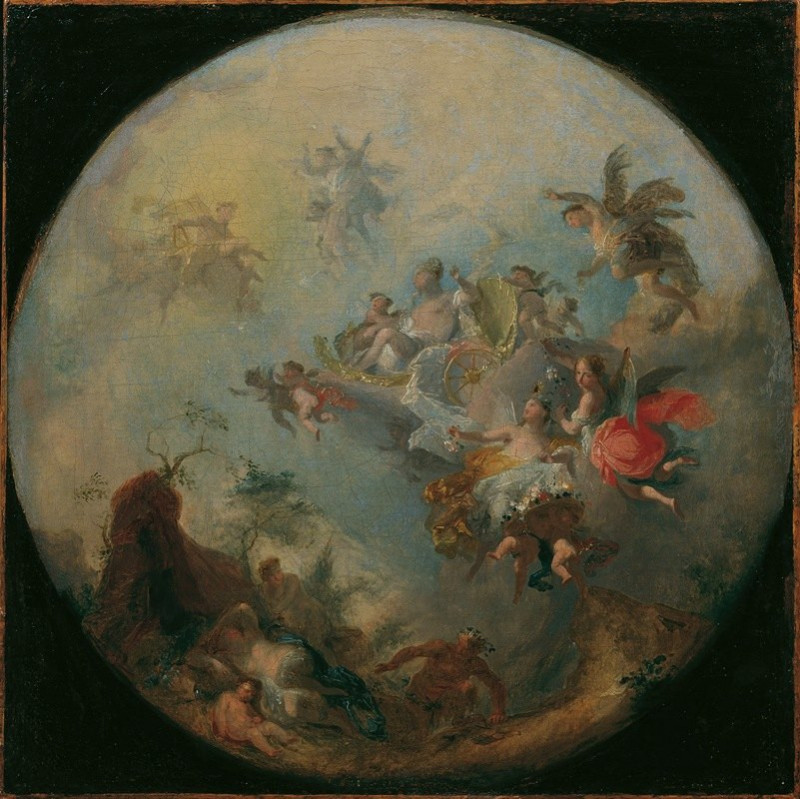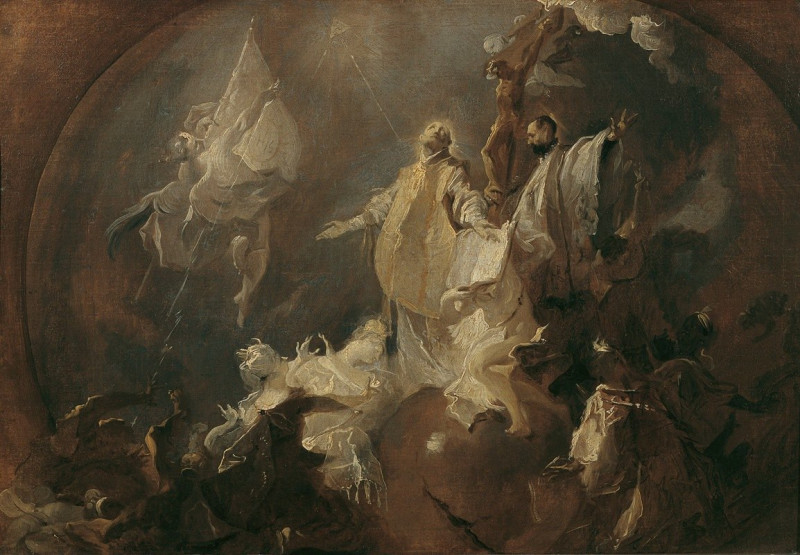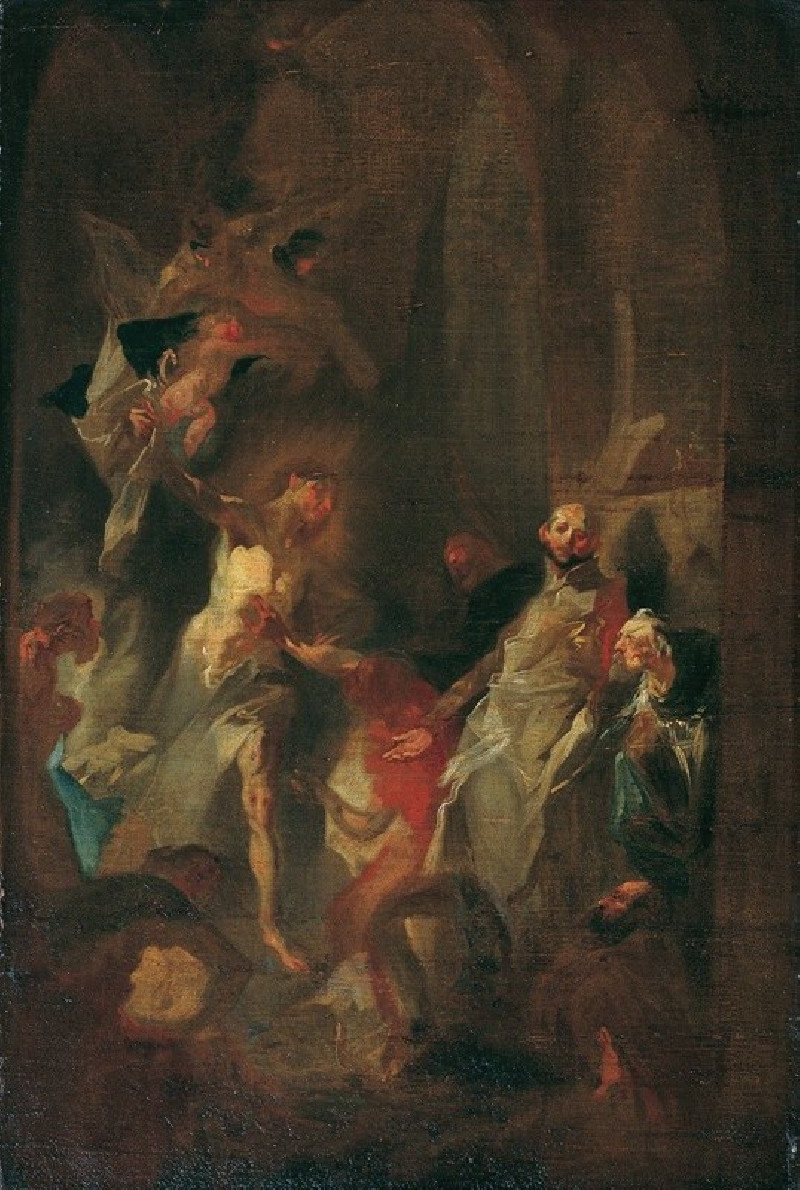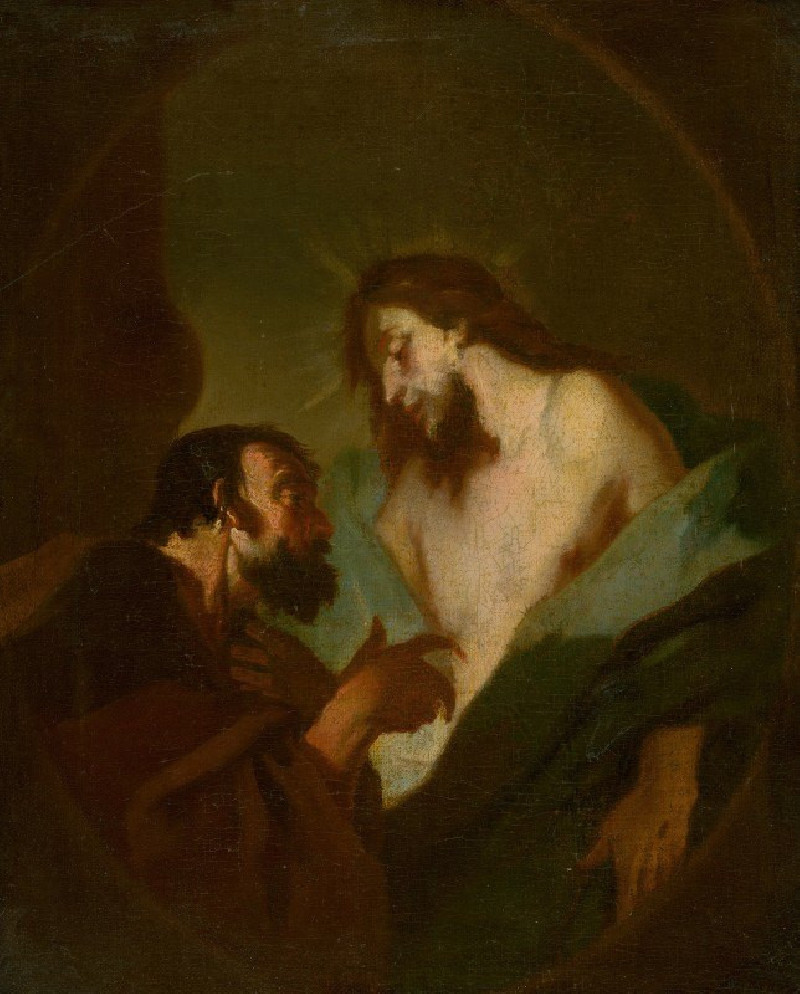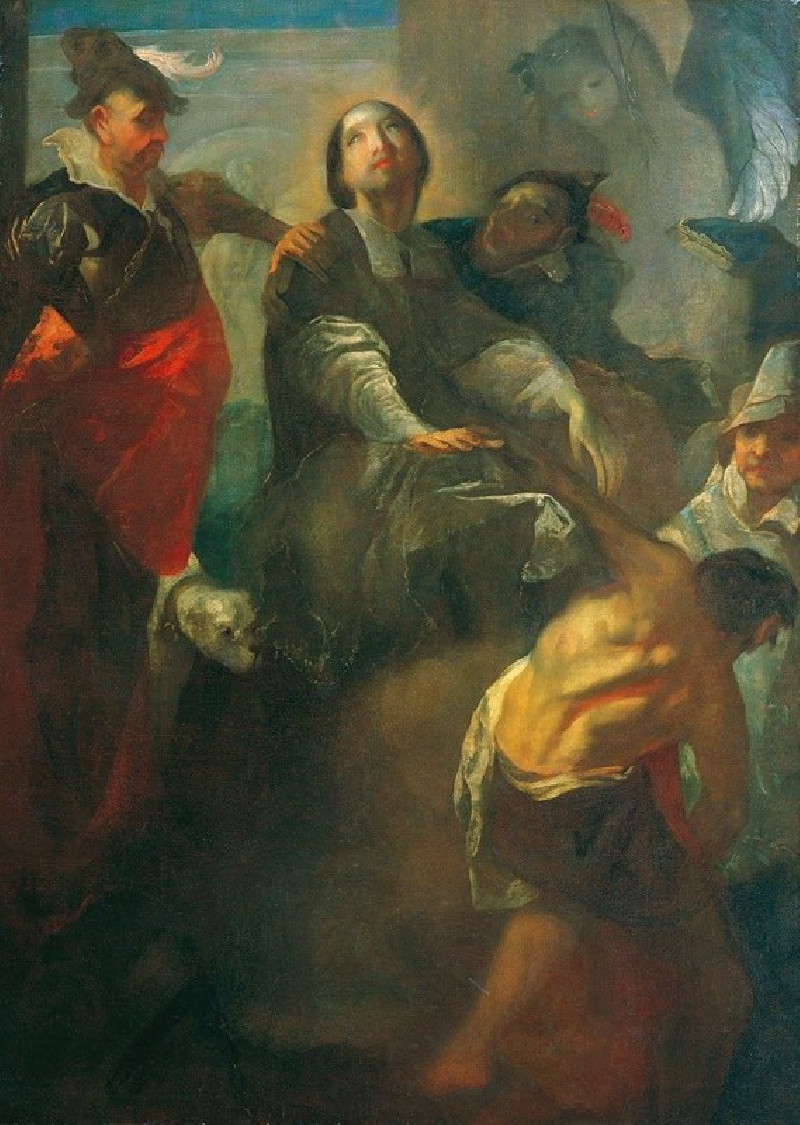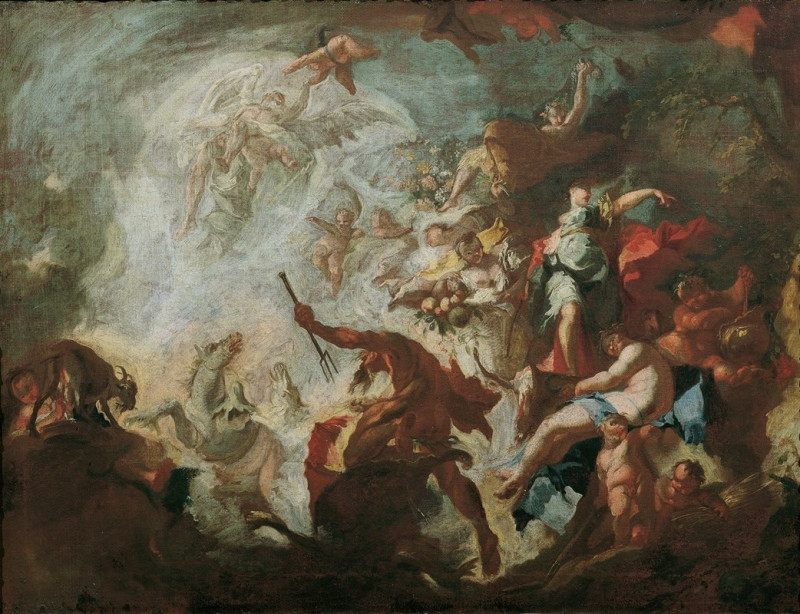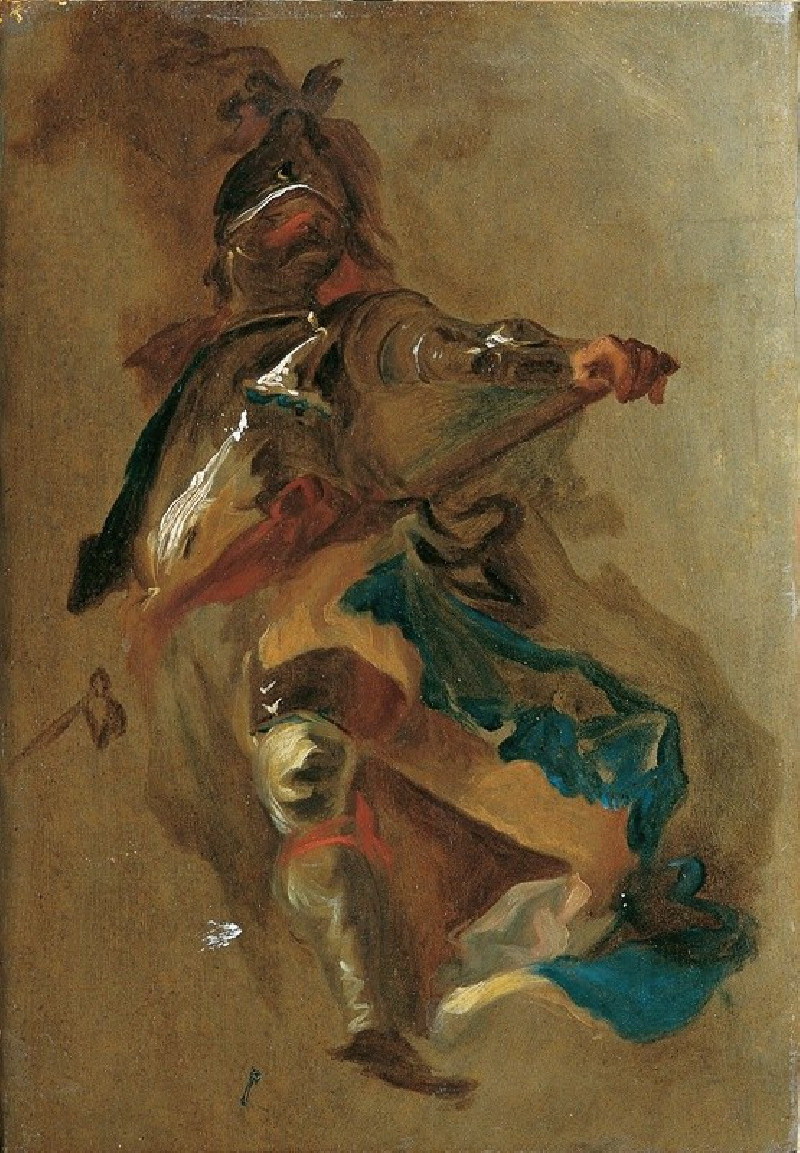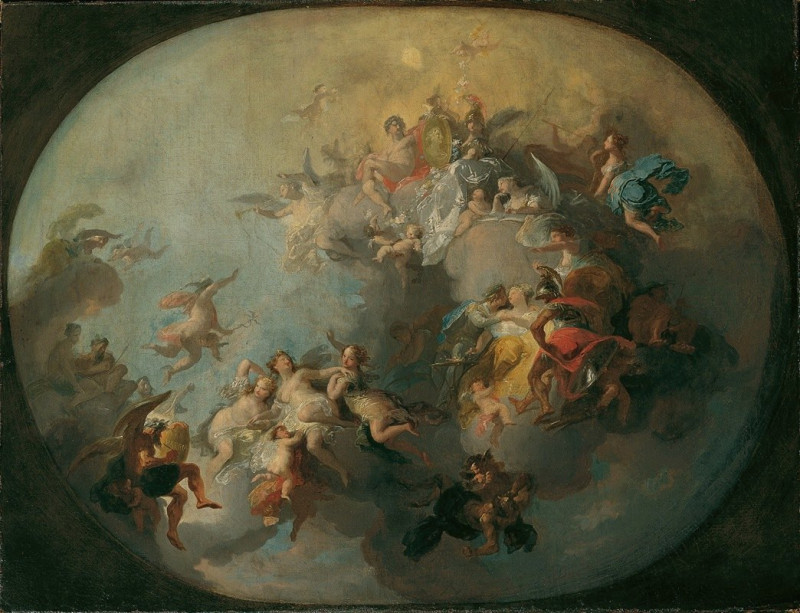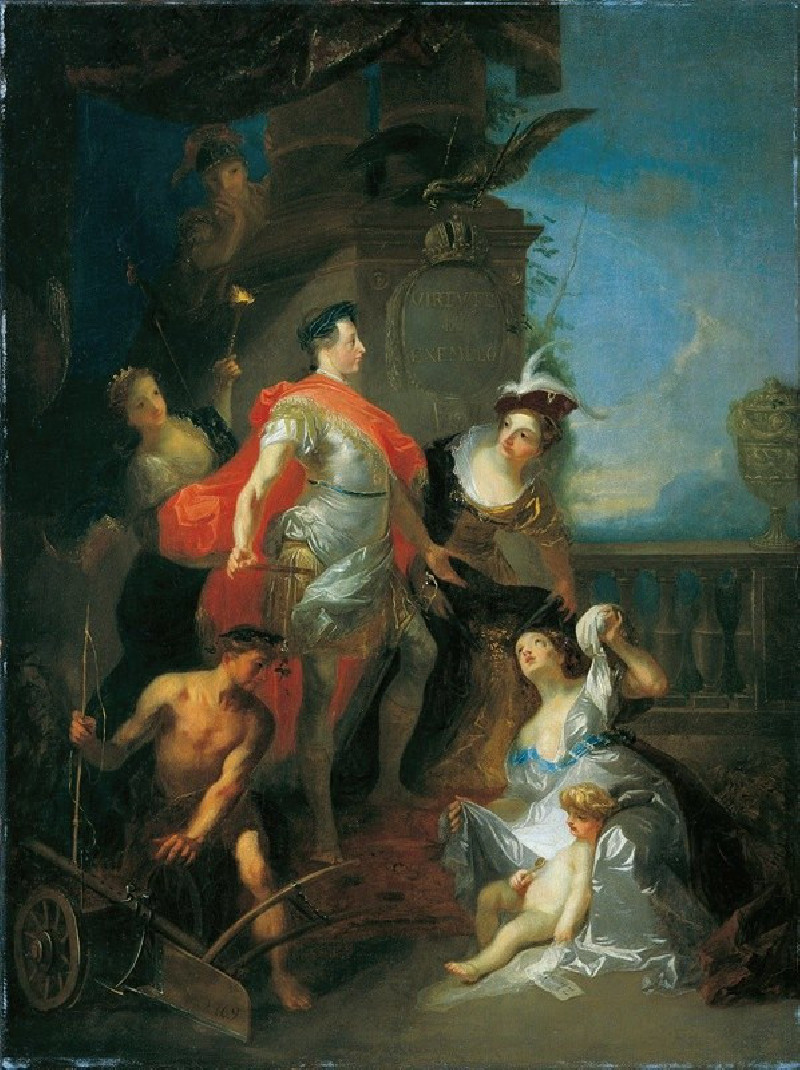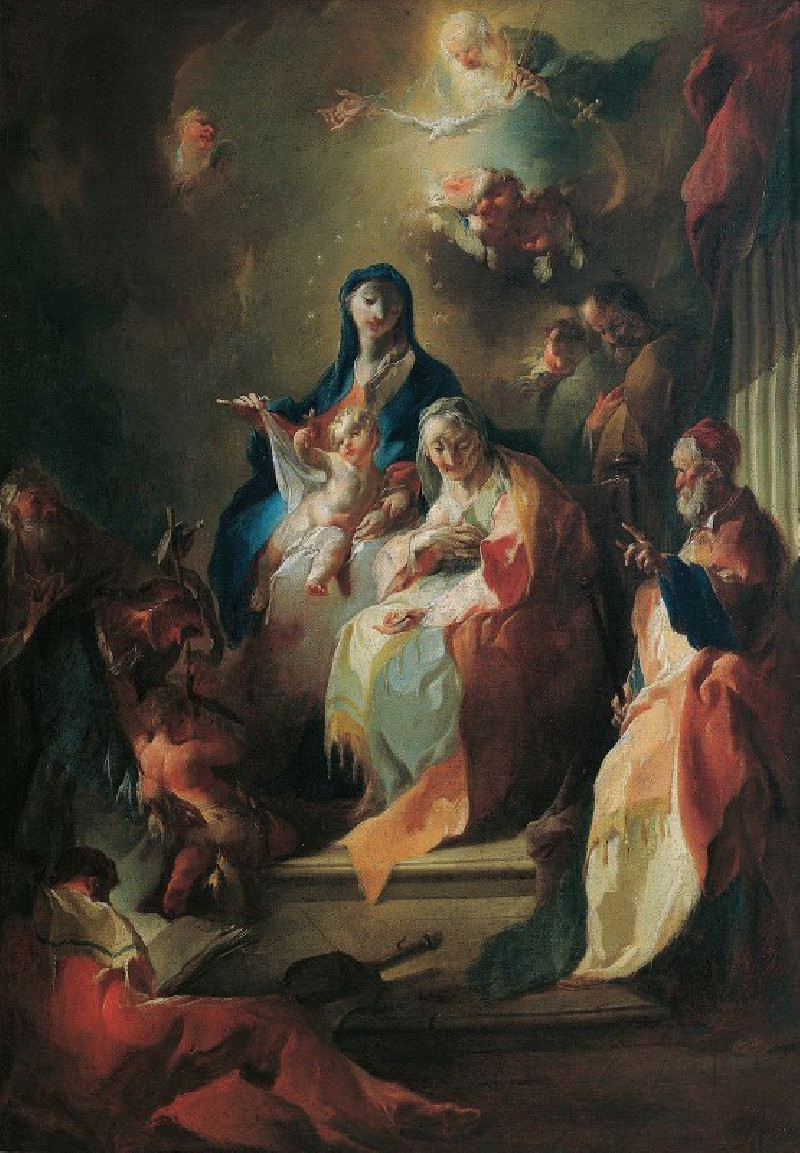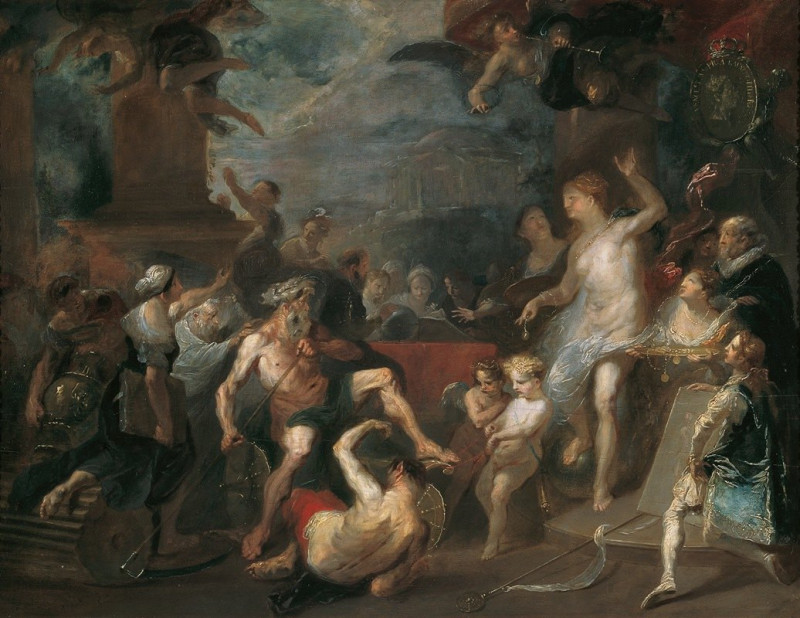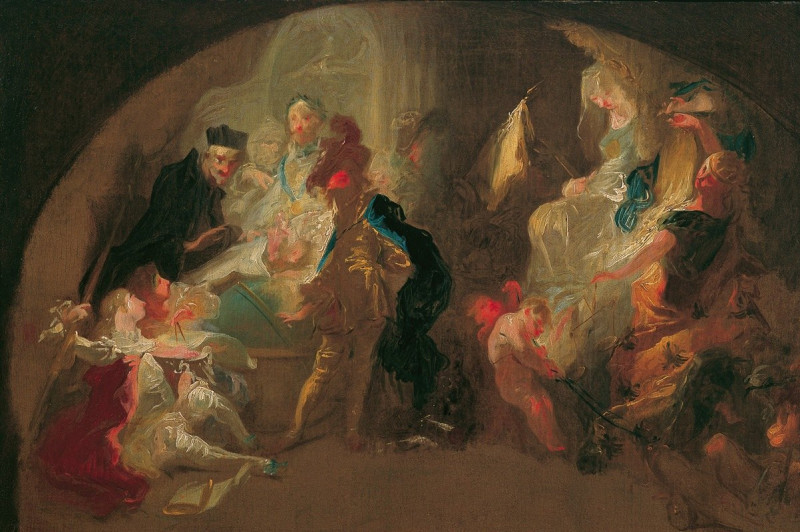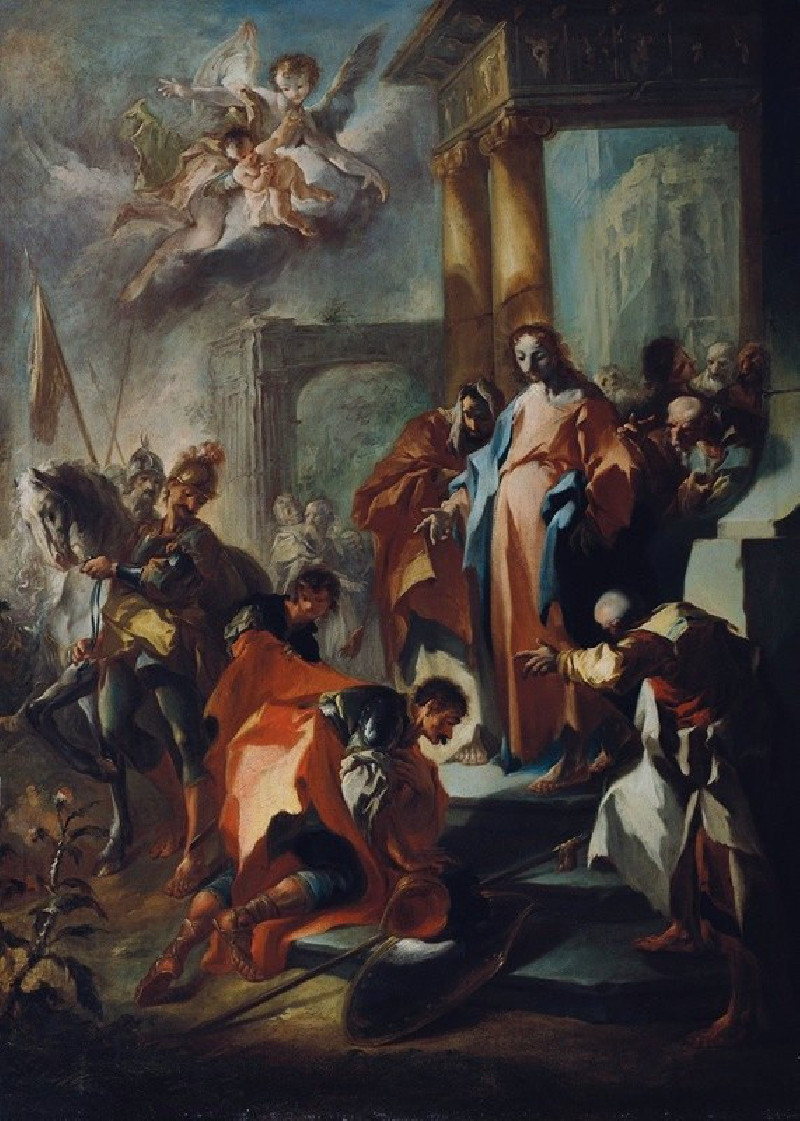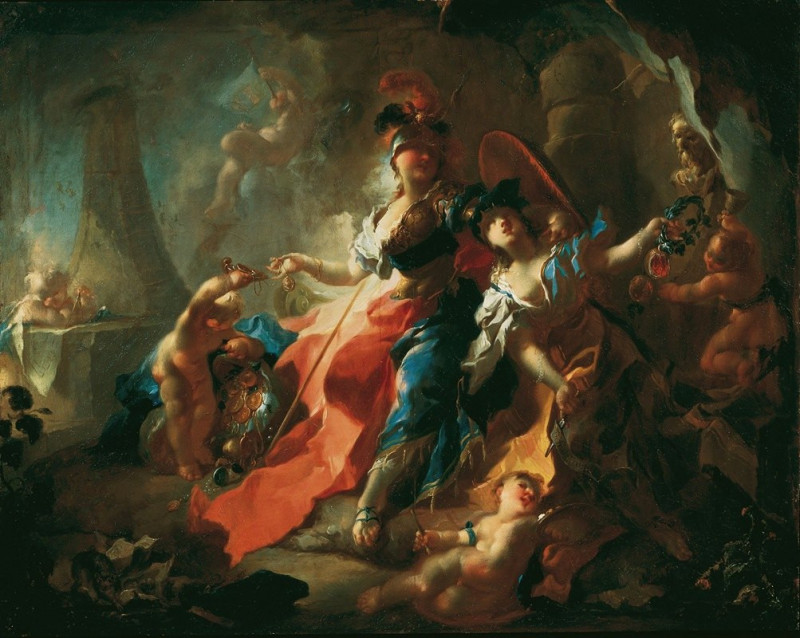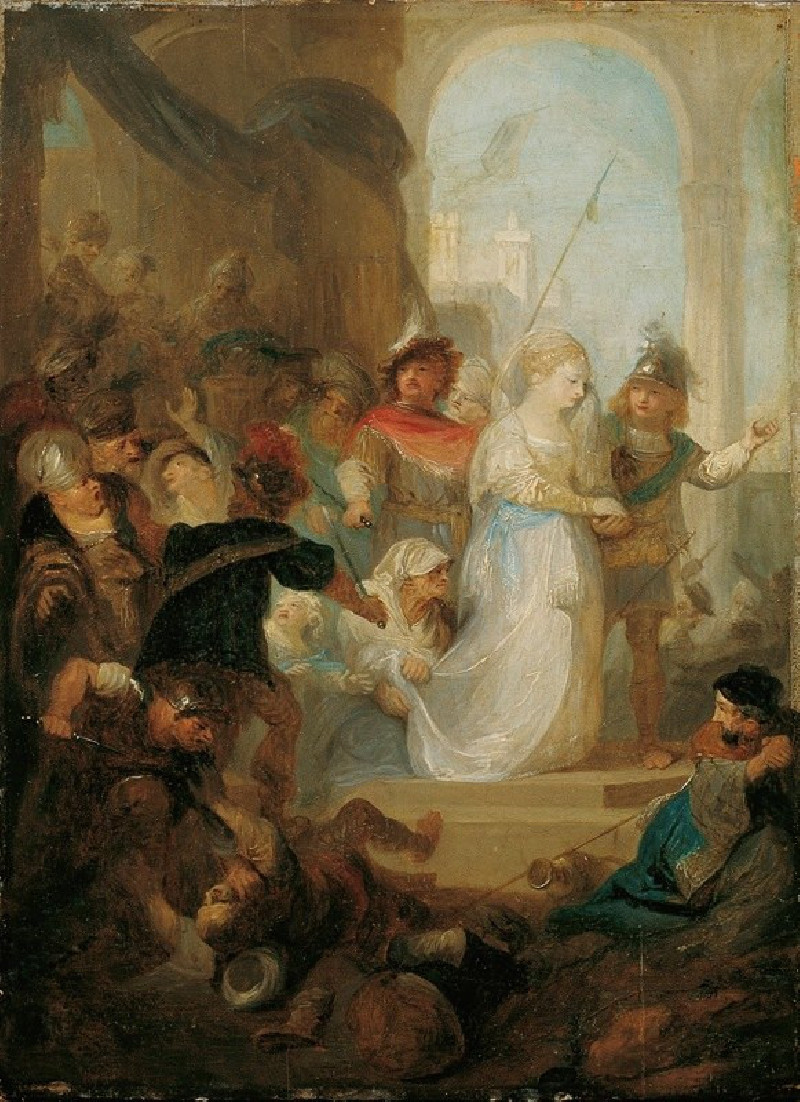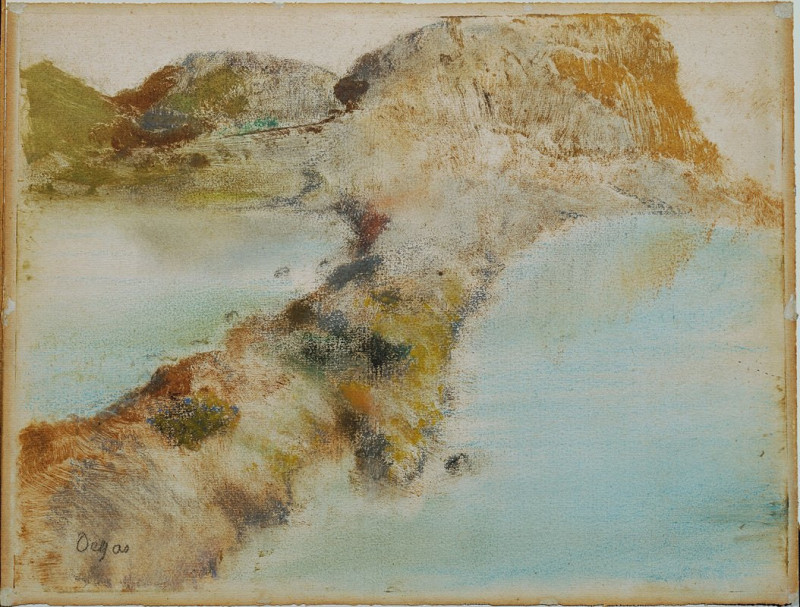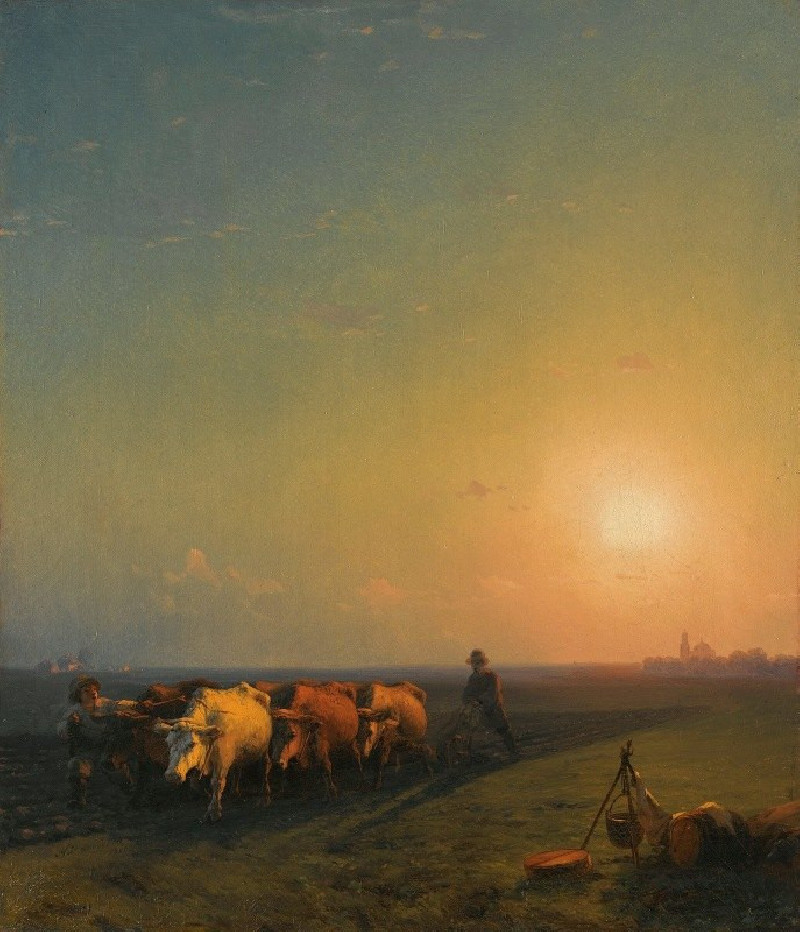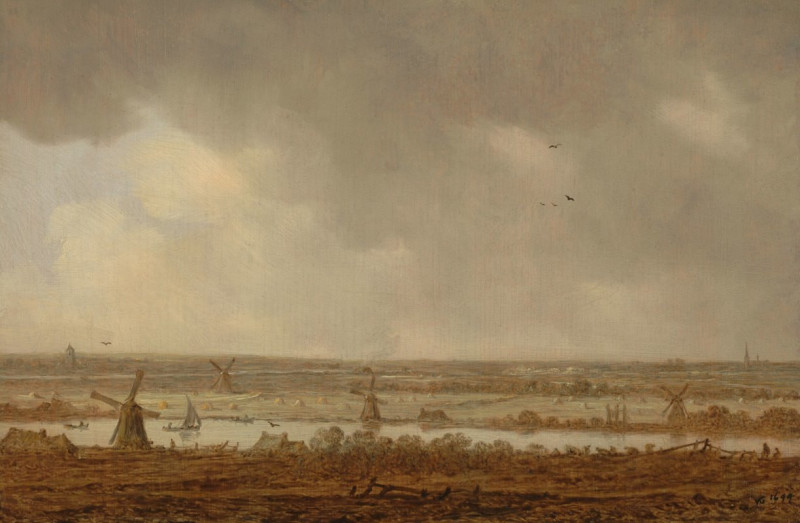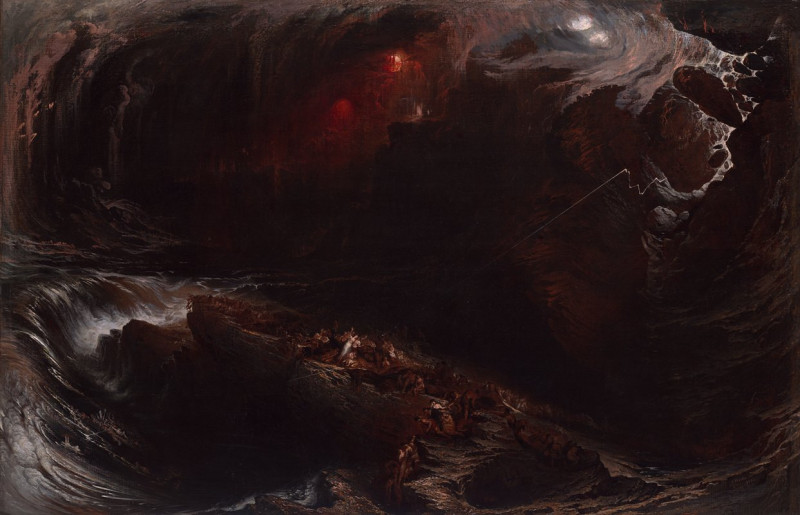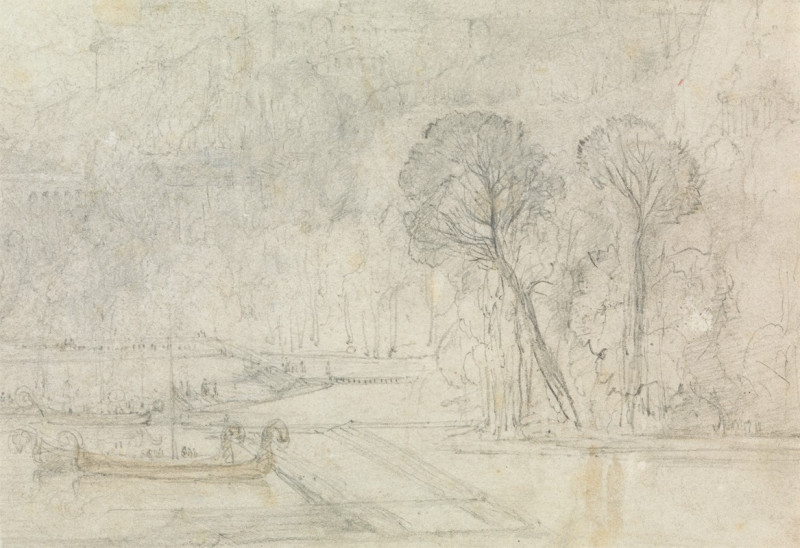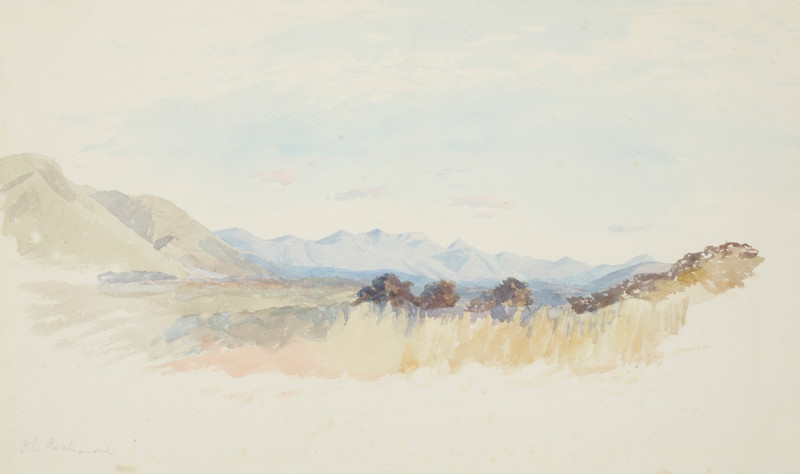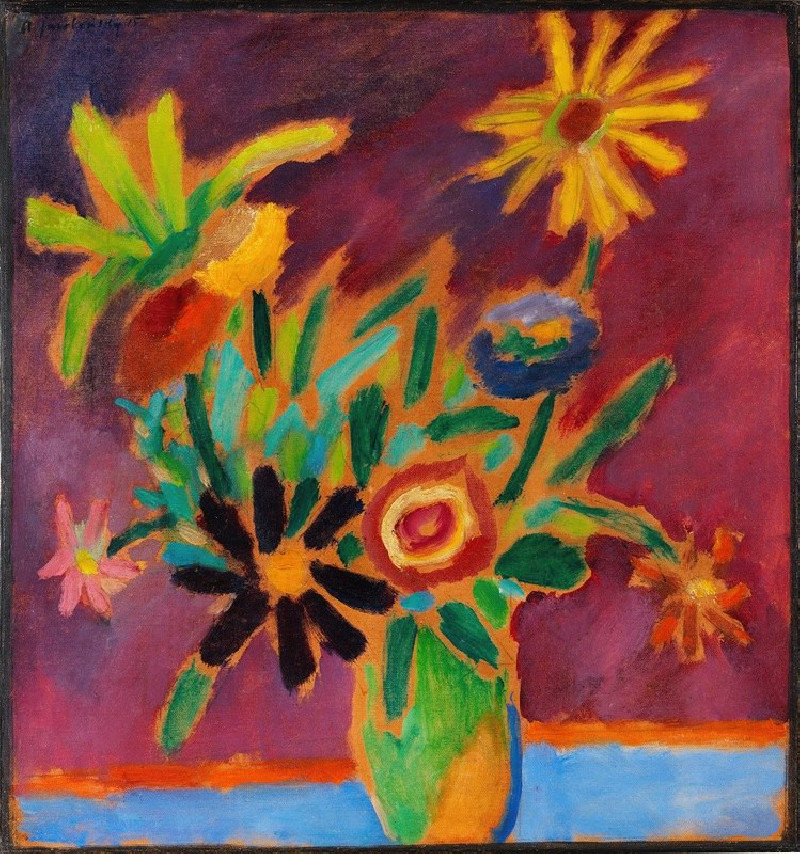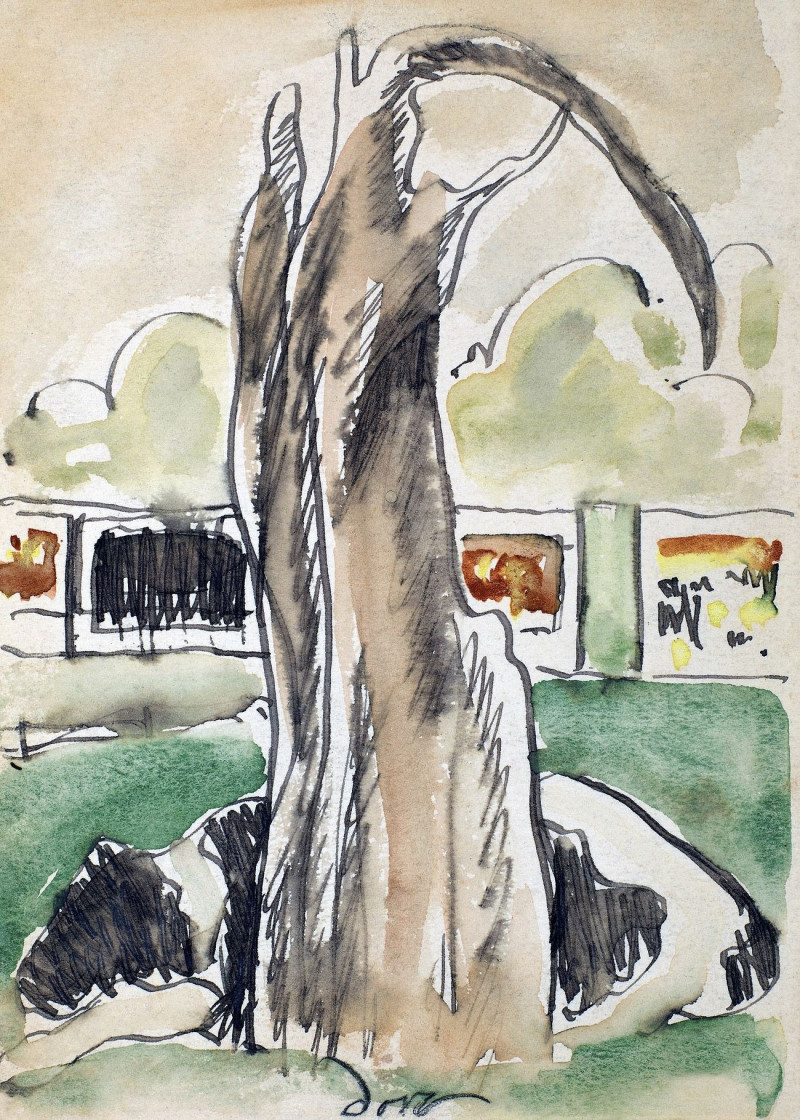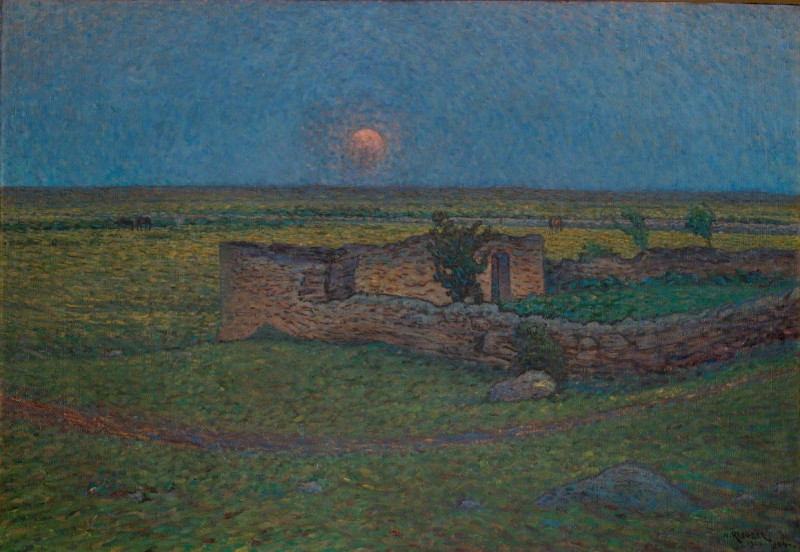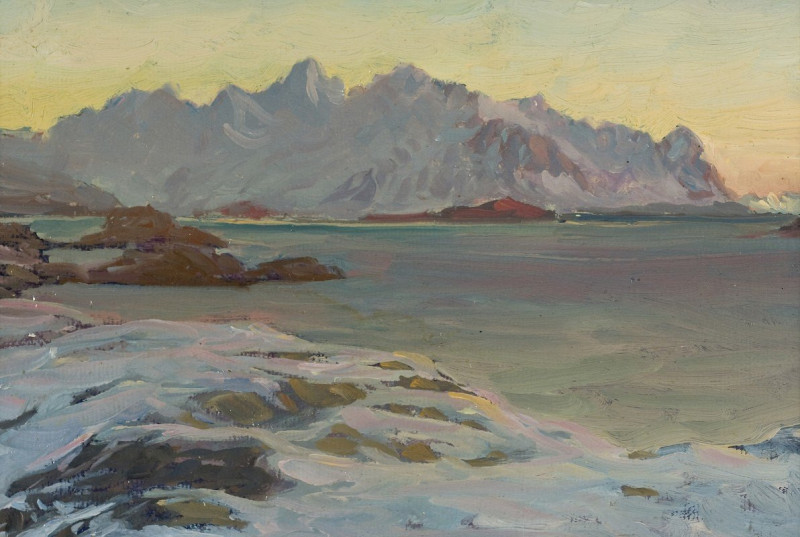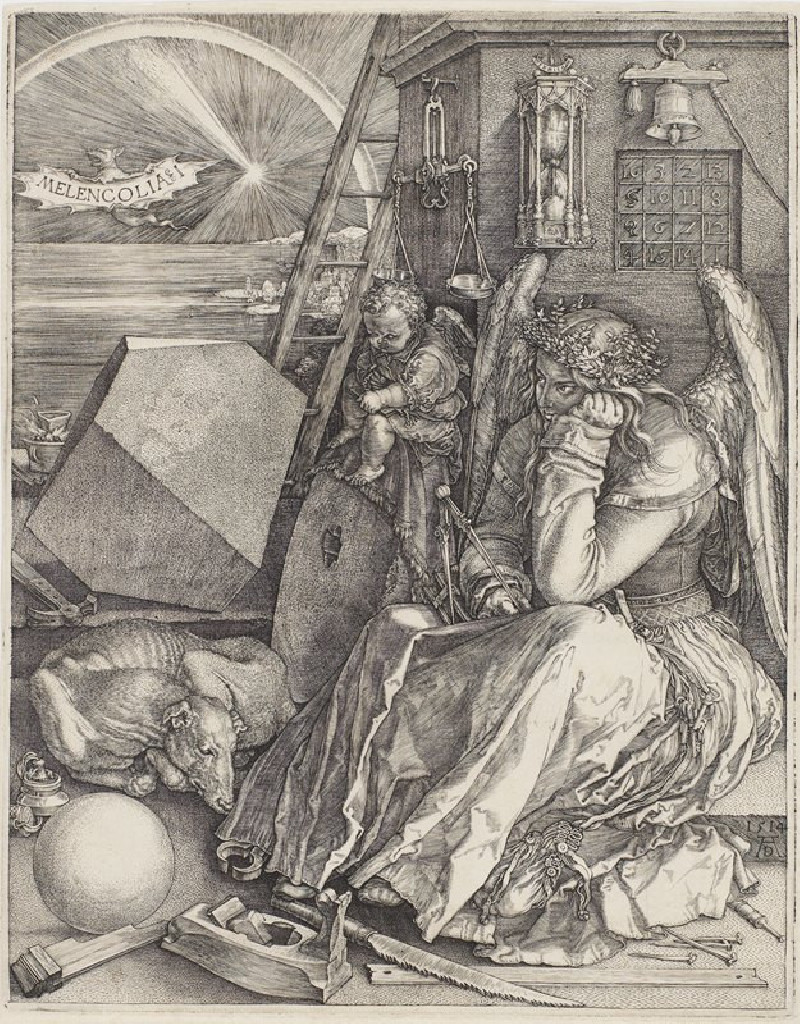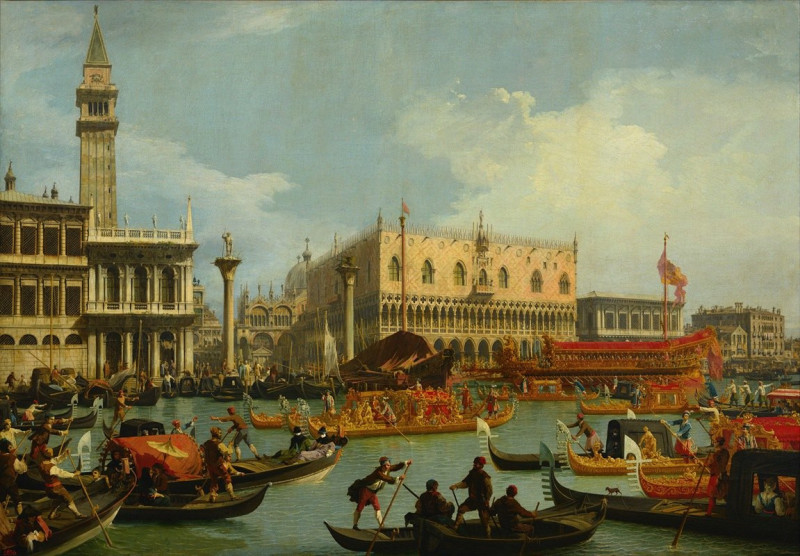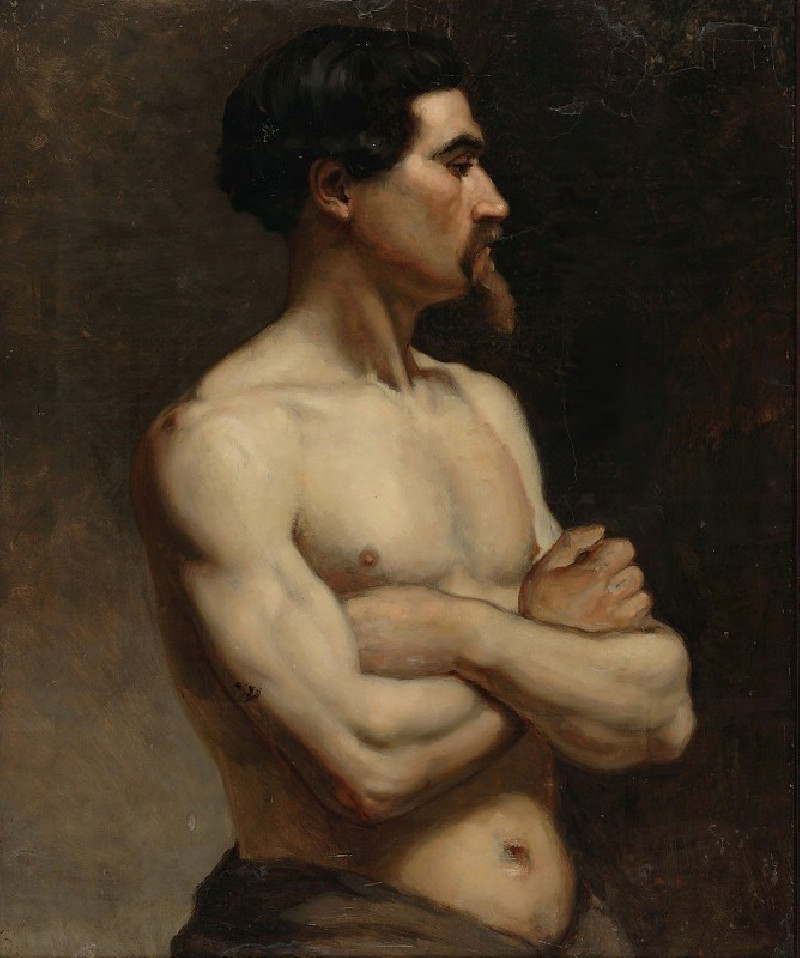The cross erection (1757-1758)
Technique: Giclée quality print
Recommended by our customers
More about this artwork
"The Cross Erection" by Franz Anton Maulbertsch, painted between 1757 and 1758, is a masterpiece that beautifully encapsulates the agony and the spiritual intensity of a pivotal scene in Christian narrative—the crucifixion of Jesus Christ. Maulbertsch's composition, renowned for its dynamic brushwork and emotive use of color, vividly portrays the moments leading up to Christ being raised on the cross.In this expressive artwork, Jesus Christ is depicted almost floating off the ground, his body arching with both a sense of torment and divine surrender. His pallid skin starkly contrasts against the darker, more earthly tones of the figures around him and the tumultuous sky above, highlighting his central role in the scene. Christ reaches upward, grasping towards the heavens, which may symbolize his impending reunion with the divine.To his immediate surroundings, complex interactions of figures can be seen: the men straining to erect the cross convey a profound physical exertion, emphasized by their muscular forms and intense facial expressions. A horse, partially visible at the lower right, adds to the chaos and effort of the scene, while its calm gaze directs viewers back to the central figure of Christ.Maulbertsch's use of light not only guides the eye through this dramatic narrative but also enhances the spiritual and emotional intensity of the scene. The dark, brooding shades meld with lighter tones to reflect the gravity and the hope woven through the depicted event.This painting is not just an artistic portrayal but a storyteller itself, conveying themes of sacrifice, redemption, and faith through its stirring visual language.
Delivery
Returns
Franz Anton Maulbertsch (June 7 , 1724 - August 8 , 1796 ) was, alongside Martin Johann Schmidt , the most outstanding painter of the Austrian late Baroque . His expressive art initially broke with tradition, ultimately culminating in classicism and completing Austrian Baroque painting in an idiosyncratic and independent way.

